Last Thursday I appeared on WBEZ's Reset program, hosted by Sasha-Ann Simons, along with former Chicago Tribune transportation reporter Mary Wisniewski, discussing whether the possible layouts currently being considered for the reconstruction North Jean Baptiste Point du Sable Lake Shore Drive are still too car-centric, and bigger changes are needed. (I'll henceforth refer to the highway as "DuSable Drive" for short.)
This week I received some stiff pushback to my comments on the show on Twitter from a couple of transit advocates who argued that my talking points were too conservative. One went so far as to call for my ouster as Streetsblog Chicago co-editor, although I think we've since patched things up.
So I'd like to clarify here exactly what I said about DuSable Drive on the radio show. I also think this Internet kerfuffle raises an interesting question about what's the most effective way to win sustainable transportation improvements: advocating for attainable goals; thinking big by pushing radical proposals; or a combination of the two, where the more radical advocates make the more moderate ones seem reasonable in comparison.
The interesting thing about the WBEZ convo is that while Wisniewski formerly wrote for a center-right daily newspaper, and Streetsblog Chicago is considered by many to be a left-wing publication, she talked about completely reinventing the drive, while I mostly talked about changes to the highway that I see as realistic, attainable wins.
The discussion was inspired by a great op-ed Wisniewski wrote for the Trib that called for shrinking the highway from eight to four lanes, with two of those lanes dedicated to express buses, and only one lane in each direction for private vehicles. The extra space could be converted to parkland.
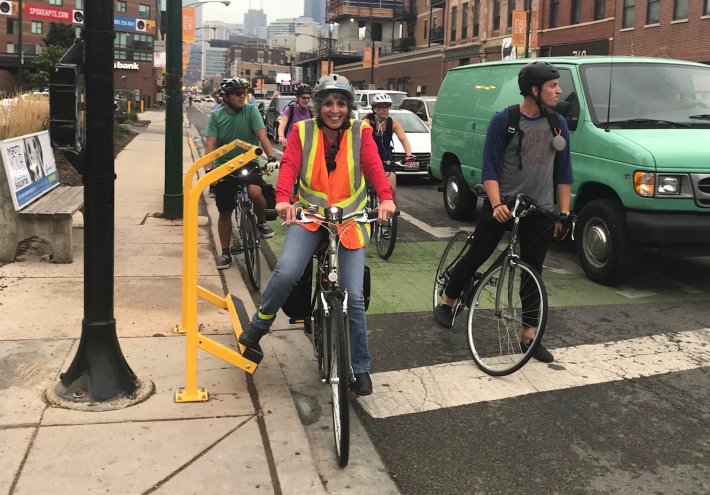
In the wake of the show, transit advocates called me out on Twitter as a Judas to the sustainable transportation cause. "You simp[ed] for the status quo," one tweeted. ("Simp" is Internet slang for being excessively servile.)
"You could’ve endorsed Mary’s ideas when you were on WBEZ and moved the conversation positively in the right direction," another advocate charged today on Twitter. "But you sat there and chose not to."
That person also accused me of ignoring the ongoing campaign by the transportation advocacy organization Better Streets Chicago (cofounded by Streetsblog Chicago co-editor Courtney Cobbs), calling for a similar scenario to the one Wisniewski floated: "Think of a future where [DuSable] Drive is part of the city grid," the group stated. "Picture a boulevard, with protected bike lanes and bus rapid transit." I wrote about that Better Streets initiative for Streetsblog back in October.
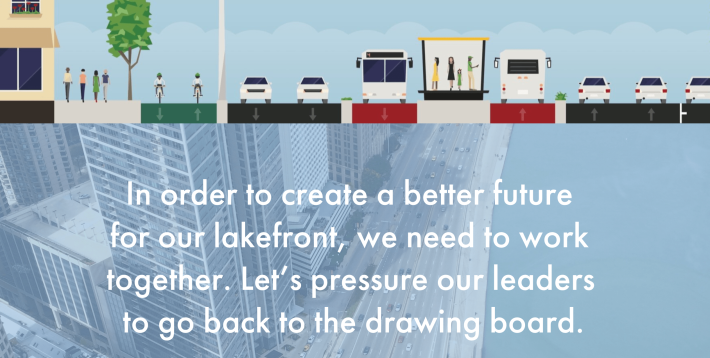
The second advocate later tweeted, "I'll say it again and keep saying it. Streetsblog Chicago needs a new [co-]editor."
However, that person eventually accepted my offer to pay them for an op-ed with their perspective on the DuSable Drive redesign issue. So presumably they no longer want me to be fired.
But let's take a look at what I actually said on WBEZ, and whether I really did simp for the status quo. The radio segment took place the day before City Council voted to rename the highway for Chicago's Black founder Jean Baptiste Point du Sable, which I advocated for.
It's true that I didn't really give a full-throated endorsement of Wisniewski's idea of shrinking DuSable Drive to four lanes, let alone, in her words, the possibility of "jackhammering the whole thing, in the style of Meigs Field airport’s demise."
However, I did discuss these possibilities on WBEZ. "We can dream and talk about things like, some people have had a Committee to Depave Lake Shore Drive [led by my college housemate and Chicago Critical Mass cofounder Michael Burton], or turning it into, say, a four-lane highway like Milwaukee's shoreline road [North Lincoln Memorial Drive.]"
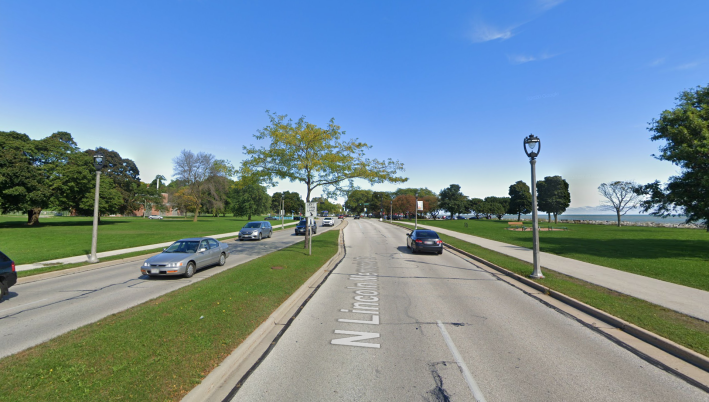
There were a couple of reasons why I was somewhat reserved about the idea of half-sizing Chicago's lakefront highway during my radio appearance. First of all the DuSable Drive renaming vote was the next day, and I didn't want to harm that Black-led campaign by making people associate it with highway shrinkage or removal.
Secondly, I don’t think shrinking the drive to four lanes is an even remotely viable option at this stage of the North DuSable reconstruction planning process. During the radio spot, Wisniewski noted that highway removal projects are currently under consideration or in progress in Rochester, New York; Detroit; and New Orleans. But those cases involve lightly-used highway boondoggles. I'm not aware of any precedent for halving the size of a highway that currently gets tons of traffic.
Wisniewski acknowledged on the radio that, as things stand, her proposal for a four-lane road was more of a conversation-starter than a realistic scenario. "Right now radically reducing the drive would require a different [Illinois Department of Transportation purpose and need] statement. So it doesn't look like this can be done under the current way that they're looking at the drive... I just thought that it would be important to point out that the way that we have our current infrastructure isn't inevitable."
I noted on WBEZ, "One thing that might actually happen in the near future is taking the eight-lane highway and converting two of the [mixed-traffic] lanes into bus-only lanes. [That's] one of the actual options on the table. So that's something that organizations like the Active Transportation Alliance and the Metropolitan Planning Council, and, of course, Streetsblog have been advocating for."
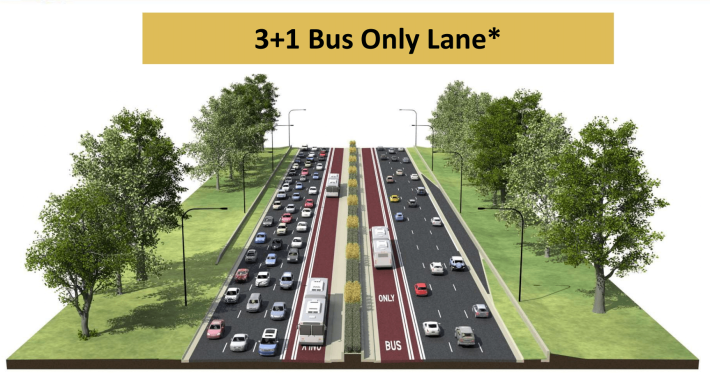
Simons, the host, asked me if there are lessons we could learn from other cities for the DuSable Drive redesign. "We can just look at what has been done right here in downtown Chicago," I responded. "If you take a look at Washington Street, for example, that used to be something like a four or five-lane street, and that was radically remixed. They took a parking lane and travel lanes and converted those into a concrete-protected bike lane, island bus stations, and a dedicated bus lane for the Loop Link... express bus system."
"When Loop Link was planned," I noted, "There were a lot of news stories where a reporter would just kind of go around and stick a microphone in a car window and say, 'What do you think of this idea?' and people would say, 'This is madness. This is going to bring the Loop to a standstill. Why are our leaders doing this?' And they just went ahead and did it, and it really hasn't created any traffic jams to speak of. And meanwhile it’s improved transit speeds. It’s definitely made it nicer to bike downtown." (Granted, Loop Link would be much more effective if it had prepaid boarding and camera enforcement.)
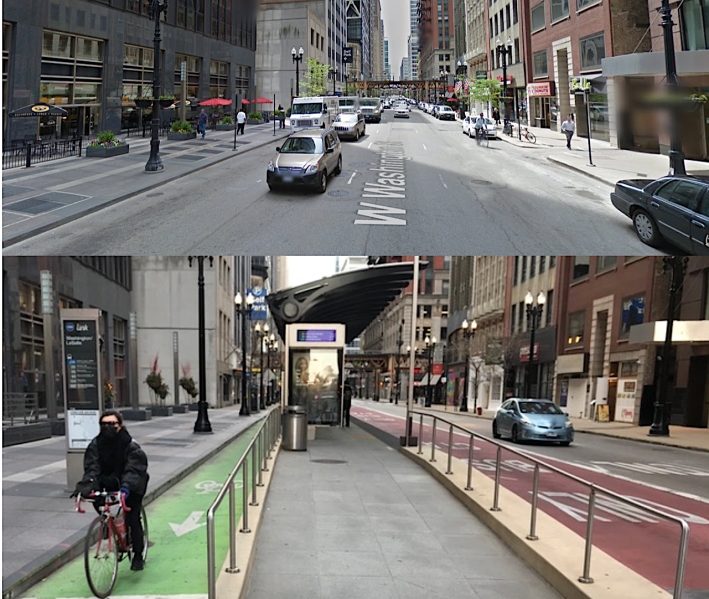
"My point is, we don't need to be afraid of taking space away from drivers," I said on WBEZ. "People are assuming that if we do convert two of the eight lanes of [DuSable Drive] to transit only, it's going to cause traffic nightmares, but that's just not the case. A CTA bus can carry at least 60 passengers, more on an articulated bus, in the footprint of about three or four cars on the drive. So buses are so much more space-efficient. And if we can give people fast, reliable bus service on [DuSable] Drive, more people will choose to ride transit instead of driving cars or taking Uber and Lyft. So I'm confident that if we act a little bold and do this conversion of travel lanes to bus lanes, we're not going to have major traffic problems."
So did I, in fact, carry water for the man on WBEZ? I don't think so. My POV is that getting bus-only lanes on the drive is already a fairly heavy political lift, so we should focus on that winnable battle.
But are those who say we should think bigger by pushing for the four-lane boulevard scenario wrong? No, and we'll be hearing from one of them in a guest Streetsblog op-ed soon.





